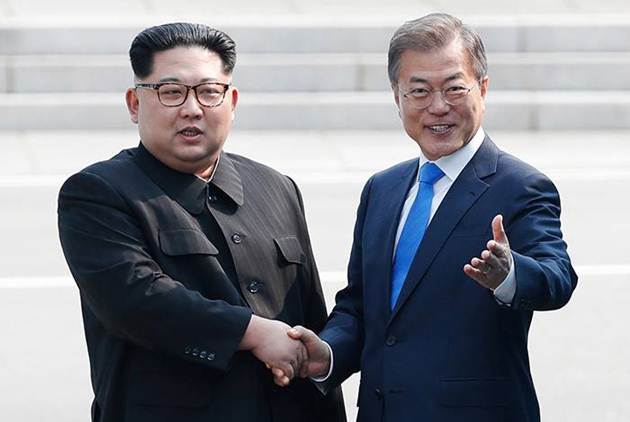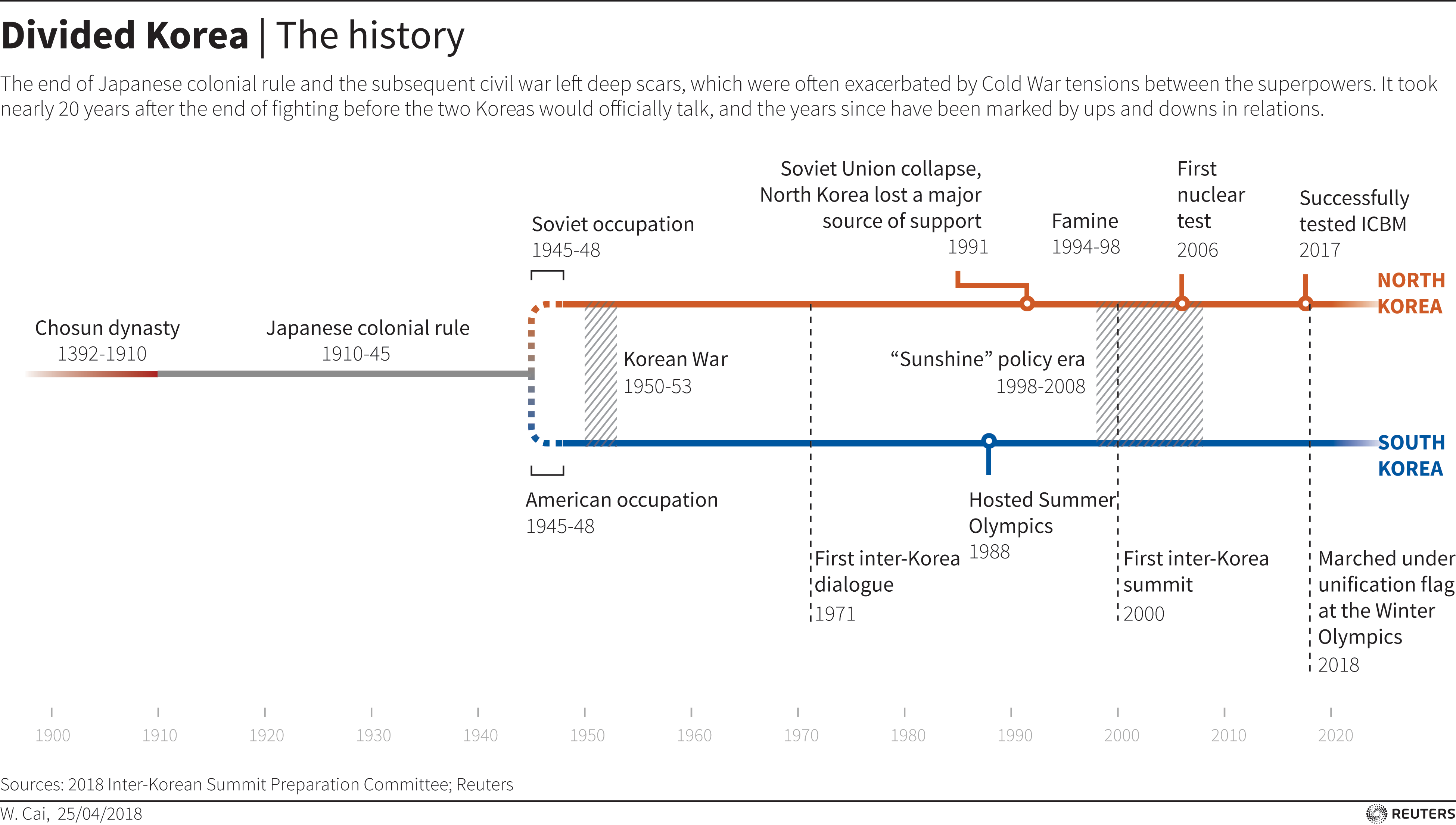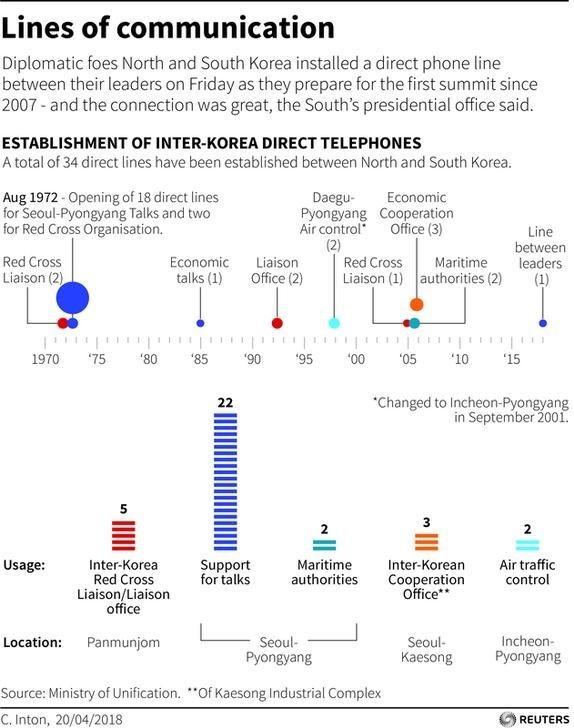This is How North and South Korea Communicate with Each Other

Source:Facebook@Korea Clickers
Communication between North and South Korea has been somewhat tense over recent decades, but that might soon change.
Views
This is How North and South Korea Communicate with Each Other
By Adam Jezardweb only
For the first time since 1953, a North Korean leader will enter South Korean territory.
Kim Jong Un will cross into the southern half of the demilitarised zone and meet with his southern counterpart Moon Jae-in at the Peace House conference centre.
It's the first time the leaders of the North and South have met in over a decade and is seen as part of the continued thawing of relations. After years of tension, the meeting highlights increasing dialogue between the two nations.

Improving Lines of Communication
Communications between hostile territories can be notoriously tricky: even when their capital cities are only a three-hour drive apart.
Although the 195 kilometres that separate Seoul in South Korea and Pyongyang in the North may seem almost insignificant, in many ways the two cities are worlds apart.
Indeed, despite the fighting that divided the two states having ended in 1953, some experts say they are technically still at war, as they only ever agreed a halt to hostilities and never signed a formal peace treaty.

Bullhorns and Minefields
By some accounts, the most frequent form of communication between the two was via bullhorn loudspeakers over the Demilitarized Zone - a 160 kilometre-long, 4km-wide strip that is heavily mined and guarded by barbed wire, armed patrols and watch towers on both sides.
However, news emerged in April that a hotline between the republics had been set up between South Korea’s presidential Blue House and North Korea’s State Affairs Commission that will allow their respective leaders, Moon Jae-in and Kim Jong Un, to speak directly to one another.
But, as the graphic shows, the political reality is that there have been various lines of telecommunications between the two sides for decades, though largely focused on practical day-to-day matters, such as liaison between different branches of the Red Cross.
Growing Rapprochement
The announcement of the hotline being tested a week before the meeting of the two leaders seems to be part of a growing rapprochement between North and South.
This strengthening relationship was exemplified by athletes from the North competing on the same women’s ice hockey team with players from the South during February’s Winter Olympics, the first time this has happened in any sport.
Competitors from both republics also marched under a unified flag during the opening ceremony in February. The flag was designed for use when the two compete as one nation and the games in Pyeongchang, South Korea, marked the first time the two teams have shared a joint entrance since the 2007 Asian Winter Games in China.
Farewell Pariah Status?
While such moves may seem to be merely symbolic, they have been hailed by some as attempts by Kim Jong Un’s regime to move away from its former position of anti-Western rhetoric accompanied by an ongoing nuclear programme and intercontinental missile tests.
Kim Jong Un’s recent visit to China and meeting with the head of America’s CIA, paving the way for a summit with US President Donald Trump, are seen by some as further evidence of attempts by the North to end its pariah status.
Website Electrospaces reported that the Red Cross hotline was reopened in February, during the Winter Olympics, after a two-year suspension. This was perhaps a precursor to the latest move to increase telecommunications between the republics and their leaders.
Additional Reading
♦ China’s Ubiquitous Shadow
♦ This Is Not Freedom, It's the Law of the Jungle
♦ Rebuilding a Scarred Civilization
Original content can be found at the website of World Economic Forum.
♦ This is how North and South Korea communicate with each other
This article is reproduced under the permission of World Economic Forum (WEF) and terms of Creative Commons Attribution-NonCommercial-NoDerivs 4.0 Unported License (“CCPL”). It presents the opinion or perspective of the original author / organization, which does not represent the standpoint of CommonWealth magazine.







